|
HOME: www.hiltonpond.org |
|||
THIS WEEK at HILTON POND (Back to Preceding Week; on to Next Week) |
A MOUSE IN THE HOUSE: Okay, let's face it. We live in out the Carolina Piedmont countryside in a charming old farmhouse built nearly a hundred years ago. It's got some delightful eccentricities but is far from being airtight. By patching holes in the foundation we--thank heavens!--got rid of a family of Striped Skunks that temporarily took up residence a few years ago, When we walk the Center's trails by night or fill our bird feeders after sunset we sometimes hear something rustling about in dead leaves on the ground.
All text & photos © Hilton Pond Center Peromyscus is likely the largest mammalian genus in North America with roughly 55 species and numerous subspecies. Every U.S. state (except Hawaii) has at least one kind of native Peromyscus, as is the case with the Mexican states, most Canadian provinces, and Central America as far south as western Panama. (We regret the need to mention several Peromyscus species are recently extinct, having lost their specialized habitats to human activities.) The Carolinas are home to four species of Peromyscus, some with overlapping ranges and similar morphologies that can make accurate identification rather difficult--even with the mouse in-hand or viewed up-close through a macro lens (above). The Oldfield Mouse, P. polionotus, is found in the western half of South Carolina and barely gets into North Carolina in southern Rutherford County; it is more common in the South Carolina Sandhills where it can dig burrows easily in sandy old fields--hence its common name. This is the most easily identified of the four Carolina Peromyscus, being paler in pelage and smaller in body size and length of hind foot (14-18mm). Hilton Pond is within the geographic range for Oldfield Mouse but we haven't documented it locally to date. Much less likely to occur here is the Cotton Mouse, P. gossypinus, whose populations are densest in the Coastal Plain and Sandhills of the Carolinas. It is essentially absent from the northwestern corner of South Carolina and to our knowledge has not been reported from here in York County. Cotton Mice have darker fur and big hind feet (22-25mm) and are more likely found in riparian habitats such as swamps and flood plains. They take their common name from their habit of including tufts of cotton in their nests.
All text & photos © Hilton Pond Center The other two Peromyscus species of the Carolinas are the ones most likely to be confused with each other, especially in more northerly parts of their range; these are the Deer Mouse (P. maniculatus) and the White-footed Mouse (P. leucopus, above). Despite their names, BOTH species have white hind feet, but because of size overlap foot length cannot be used to separate the species. Tail measure is also of little use because of overlap, although in White-footed Mice this appendage is generally shorter.
All text & photos © Hilton Pond Center Thus, to separate P. maniculatus from P. leucopus one should look at a combination of attributes: 1) tail coloration (heavily bi-colored in the Deer Mouse with the dorsal surface much darker than the ventral, while the tail is indistinctly two-toned in White-footed Mouse as shown above); 2) tail fur (Deer Mouse generally has more hair on its tail and a large tuft at the tip); 3) ear (larger, more hairy in White-footed Mouse, with an edge of whitish fur as in photo just below); and, 4) flank (the delineation between dark dorsal fur and white belly fur is generally more distinct in White-footed).
All text & photos © Hilton Pond Center Of even greater usefulness in identifying these two mice with similar appearances are their respective distributions. We're confident we have no Deer Mice at Hilton Pond Center because the species occurs only in woodlands of the Mountain Provinces of the Carolinas, where they might be the most plentiful of all small mammals. By comparison, White-footed Mice in South Carolina occur mostly above the fall line--including the Center--where they inhabit a diverse set of habitats such as hardwood forest, fence rows, and grassy edges. Prolific populations of White-footed Mice are an important part of the natural food chain, serving both as seed dispersers and as abundant prey for everything from weasels to foxes and hawks to crows.
All text & photos © Hilton Pond Center Without a doubt all these little indoor rodents at Hilton Pond Center are White-footed Mice that have expanded their habitat to include human dwellings in the Carolina Piedmont.
All text & photos © Hilton Pond Center We much prefer these portable aluminum devices to old-style mouse traps that--traditionally baited with cheese--snuff out the life of the mouse by breaking its neck. Better to catch our White-footed Mice alive and transport them to the woods where they can hang out in a more natural place of residence--or maybe end up as a midnight snack for the family of a Great Horned Owl.
All text & photos © Hilton Pond Center POSTSCRIPT #1: When we first came to Hilton Pond in 1982 we occasionally encountered a House Mouse (Mus musculus) in the farmhouse, but it's been at least 25 years since we've seen one of these invasive rodents whose ancestors undoubtedly were introduced by the first European visitors to North America. We also no longer encounter the much larger and even more destructive Norway Rat (Rattus norvegicus). Perhaps these two non-natives were better adapted to agricultural habitat that made up Center property three decades ago and today just don't compete with White-footed Mice and Hispid Cotton Rats (Sigmodon hispidus) that are native species more at home in meadows and woodland that now predominate. POSTSCRIPT #2: Despite our admiration for and appreciation of Peromyscus mice with which we share Hilton Pond Center's old farmhouse, we're well aware in some situations these beady-eyed little rodents might pose a health risk by serving as vectors of hantavirus and Lyme disease. That said, hantavirus is usually contracted by people when they inhale dust from old mouse nests or droppings in particularly dirty locations, while Lyme disease is acquired from the bite of a tick that previously fed on blood of an infected mouse. As a precaution we're quite careful concerning what we inhale and about keeping ticks off our skin. All text & photos © Hilton Pond Center All contributions are tax-deductible on your |
|---|
|
"This Week at Hilton Pond" is written and photographed by Bill Hilton Jr., executive director of Hilton Pond Center for Piedmont Natural History
|
|
|
Please refer "This Week at Hilton Pond" to others by clicking on this button: |
Comments or questions about this week's installment? Send an E-mail to INFO. (Be sure to scroll down for a tally of birds banded/recaptured during the period, plus other nature notes.) |

Click on image at right for live Web cam of Hilton Pond,
plus daily weather summary
Transmission of weather data from Hilton Pond Center via WeatherSnoop for Mac.
|
--SEARCH OUR SITE-- For a free on-line subscription to "This Week at Hilton Pond," send us an |
|
Thanks to the following fine folks for recent gifts in support of Hilton Pond Center for Piedmont Natural History and/or Operation RubyThroat: The Hummingbird Project. Your tax-deductible contributions allow us to continue writing, photographing, and sharing "This Week at Hilton Pond" with students, teachers, and the general public. Please see Support or scroll below if you'd like to make an end-of-year tax-deductible gift of your own.
|
If you enjoy "This Week at Hilton Pond," please help support Hilton Pond Center for Piedmont Natural History. It's painless, and YOU can make a difference! (Just CLICK on a logo below or send a check if you like; see Support for address.) |
|
Make credit card donations on-line via Network for Good: |
|
Use your PayPal account to make direct donations: |
|
If you like shopping on-line please become a member of iGive, through which 1,200+ on-line stores from Amazon to Lands' End and even iTunes donate a percentage of your purchase price to support Hilton Pond Center.  Every new member who registers with iGive and makes a purchase through them earns an ADDITIONAL $5 for the Center. You can even do Web searches through iGive and earn a penny per search--sometimes TWO--for the cause! Please enroll by going to the iGive Web site. It's a painless, important way for YOU to support our on-going work in conservation, education, and research. Add the iGive Toolbar to your browser and register Operation RubyThroat as your preferred charity to make it even easier to help Hilton Pond Center when you shop. Every new member who registers with iGive and makes a purchase through them earns an ADDITIONAL $5 for the Center. You can even do Web searches through iGive and earn a penny per search--sometimes TWO--for the cause! Please enroll by going to the iGive Web site. It's a painless, important way for YOU to support our on-going work in conservation, education, and research. Add the iGive Toolbar to your browser and register Operation RubyThroat as your preferred charity to make it even easier to help Hilton Pond Center when you shop. |
|
BIRDS BANDED THIS WEEK at HILTON POND CENTER 16-31 January 2013 |
|
|
SPECIES BANDED THIS WEEK: * = New species for 2013 WEEKLY BANDING TOTAL: 4 species 114 individuals 2013 BANDING TOTAL: 32-YEAR BANDING GRAND TOTAL: (since 28 June 1982, during which time 171 species have been observed on or over the property) 126 species (32-yr avg = 65.2) 58,324 individuals (32-yr avg = 1,822.6) NOTABLE RECAPTURES THIS WEEK: Northern Cardinal (2) Purple Finch (1)
All text & photos © Hilton Pond Center
|
OTHER NATURE NOTES: --A male Northern Cardinal recaptured on 31 Jan was banded locally in Oct 2004 as a hatch year bird, meaning he's reached his tenth year. He now holds the record for oldest banded bird at Hilton Pond Center. The federal Bird Banding Lab lists the age record for NOCA is 16 years. --Because of aforementioned illness, we had no choice but to cancel our 5-13 Feb Operation RubyThroat expedition to Costa Rica (west). We're recuperating at the Center right now to be sure we can get to Nicaragua on 14 Feb and then to Belize for two expeditions after that. Our deepest apologies to those who registered for the aborted trip. Rest assured we'll be in good health and folks can sign up now for November 2013 trips to Guatemala & Costa Rica (east). --The Center's first migratory duck of the current cold season--a male Hooded Merganser--showed up on 25 Jan in the middle of a minor sleet storm. --With a pre-dawn low temp of 22.6 degrees on 26 Jan, Hilton Pond froze over completely--albeit thinly--for the first time this winter. Sleet from the day before was still on the ground so we were surprised to see several Eastern Chipmunks--usually snug in their burrows on days like this--out gathering seeds from beneath the bird feeders.
All text & photos © Hilton Pond Center --After all that cold, near record-high temperatures just below 74 degrees on 29-30 Jan made it feel like spring. Male catkins of Hazel Alder shrubs opened and dumped pollen that, in turn, floated on Hilton Pond and got swept onto the northern bank by strong southerly breezes. The result: A windrow (above) of yellow-white pollen. And we're pleased the float at the end of the pier is now actually floating again--rather than sitting on pond bottom! --The Center's Yearly Yard List 2013 of birds seen on or over the property stands at 29 species as of 31 Jan. --Last week's photo essay was about the Blue Jay--a much-maligned native bird that plays important ecological roles. It's archived and always available on the Hilton Pond Center Web site as Installment #561. All text & photos © Hilton Pond Center |


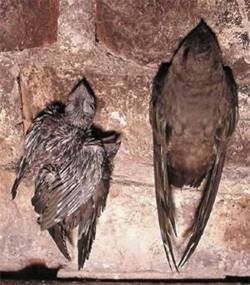 but there's no way we can--or really want to--eliminate all the interesting little critters that come and go. When bugs and beetles show up in the kitchen we don't use a fly swatter or boot heel, preferring to catch these insects in a drinking glass and free them outside. We've had bats in our belfry--or at least clustered on louvered vents in our eaves--and several generations of Black Rat Snakes have glided up a Flowering Dogwood tree outside our office window before entering the attic in pursuit of whatever tasty prey they might consume. Occasionally a near-fledgling Chimney Swift appears in the living room fireplace
but there's no way we can--or really want to--eliminate all the interesting little critters that come and go. When bugs and beetles show up in the kitchen we don't use a fly swatter or boot heel, preferring to catch these insects in a drinking glass and free them outside. We've had bats in our belfry--or at least clustered on louvered vents in our eaves--and several generations of Black Rat Snakes have glided up a Flowering Dogwood tree outside our office window before entering the attic in pursuit of whatever tasty prey they might consume. Occasionally a near-fledgling Chimney Swift appears in the living room fireplace 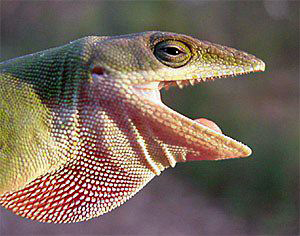 but we have no Oriental Cockroaches thanks to the efficient work of solitary Wolf Spiders that patrol the premises with our blessings. We count all this as part of "the joy of country living" but lest you think Hilton Pond Center is overcome by vermin, on most days we encounter NONE of these animals--just like you seldom see all the organisms that undoubtedly pass through or live in your OWN home. That said, among our most common household visitors--especially when crisp days of autumn arrive--are sundry so-called "field mice" that invite themselves in from the cold.
but we have no Oriental Cockroaches thanks to the efficient work of solitary Wolf Spiders that patrol the premises with our blessings. We count all this as part of "the joy of country living" but lest you think Hilton Pond Center is overcome by vermin, on most days we encounter NONE of these animals--just like you seldom see all the organisms that undoubtedly pass through or live in your OWN home. That said, among our most common household visitors--especially when crisp days of autumn arrive--are sundry so-called "field mice" that invite themselves in from the cold. With a flashlight we often pick up eyeshine--usually from a larger animal such as a grazing Eastern Cottontail or a masked Raccoon
With a flashlight we often pick up eyeshine--usually from a larger animal such as a grazing Eastern Cottontail or a masked Raccoon 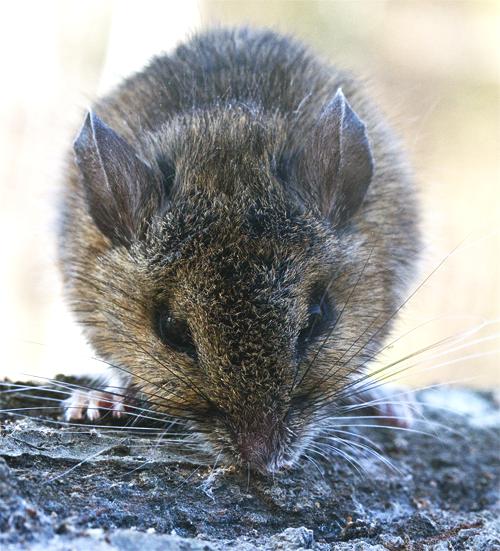
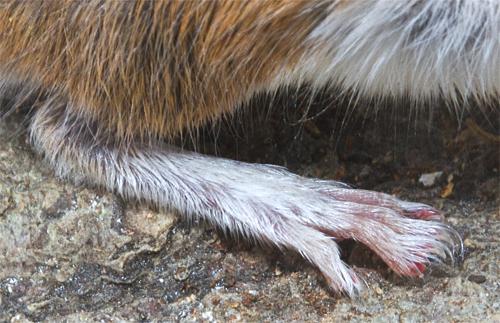
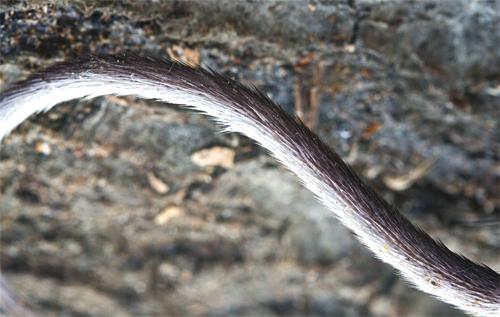
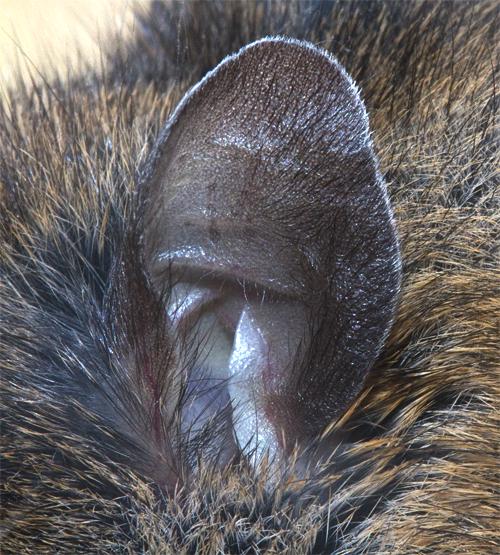
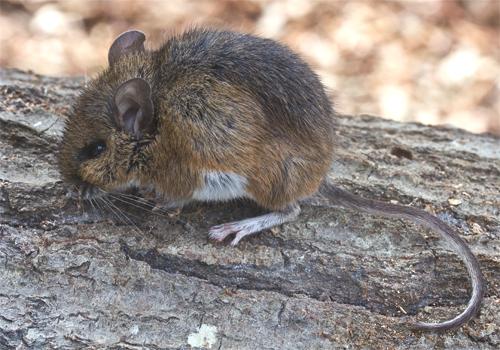
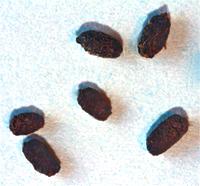 On any given day autumn through spring there's likely to be an outdoor mouse inside our house, but they do little damage and since they're primarily nocturnal we seldom know they're here. Occasionally they leave their little calling cards--quarter-inch elongated black droppings
On any given day autumn through spring there's likely to be an outdoor mouse inside our house, but they do little damage and since they're primarily nocturnal we seldom know they're here. Occasionally they leave their little calling cards--quarter-inch elongated black droppings 
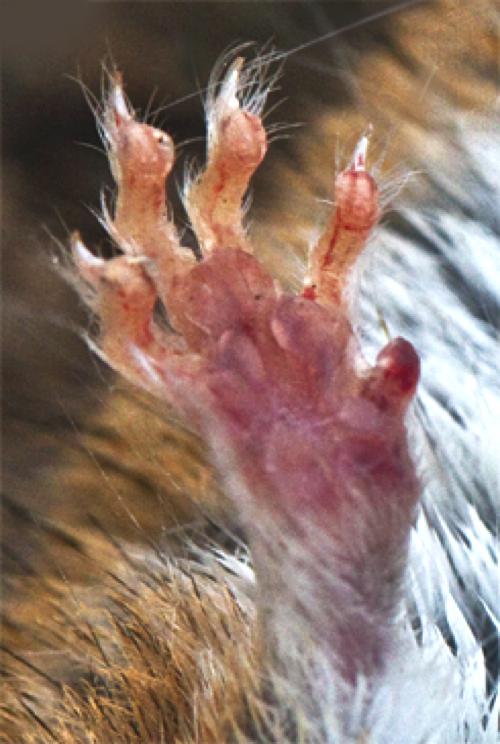





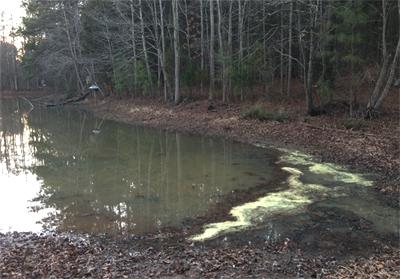
 Oct 15 to Mar 15:
Oct 15 to Mar 15: